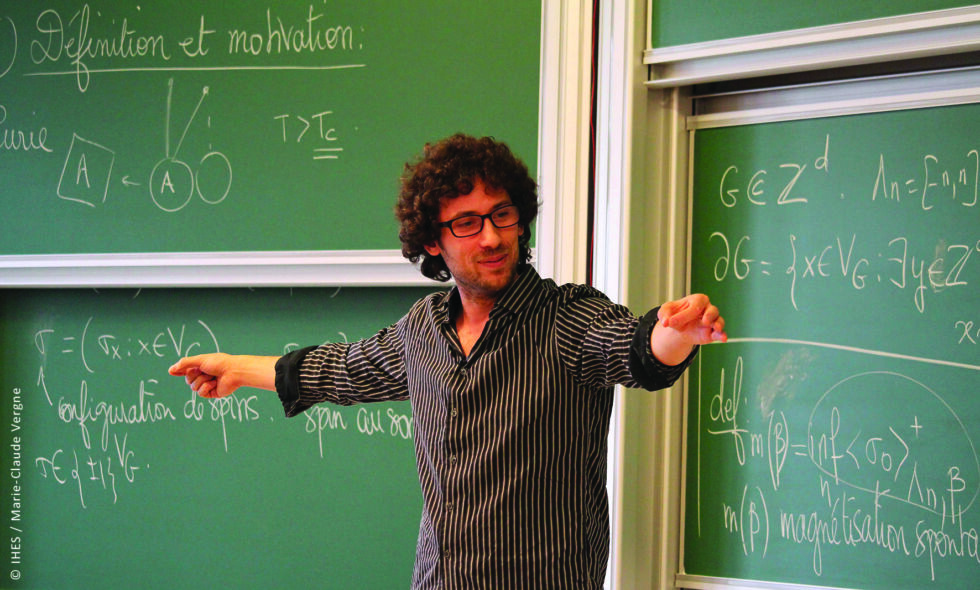

How one institution keeps claiming math’s highest award
source link: https://arstechnica.com/science/2022/07/how-one-institution-keeps-claiming-maths-highest-award/
Go to the source link to view the article. You can view the picture content, updated content and better typesetting reading experience. If the link is broken, please click the button below to view the snapshot at that time.

Award winning —
How one institution keeps claiming math’s highest award
One institute has had 12 math faculty, and eight of them have won the Fields Medal.
Dhananjay Khadilkar - 7/18/2022, 5:13 PM

Even before this year’s Fields Medal winners announcement, the Institut des Hautes Etudes Scientifiques (IHES) or the Institute of Advanced Scientific Studies, boasted a remarkable statistic. Since its founding in 1958, the institute has had 12 permanent mathematics professors; seven of them had won a Fields Medal, considered to be the Nobel Prize in mathematics. On July 5, Hugo Duminil-Copin was named a recipient of this year’s prize, and the IHES extended its remarkable record to eight. “I am extremely glad that Hugo won the Fields Medal. We were betting on him to win the prize this year,” IHES director Emmanuel Ullmo told Ars Technica.
People before topics
Duminil-Copin was recognized for his use of probability theory to tackle problems in statistical physics. The 36-year-old is the first professor at IHES specializing in probability theory, a trait that manifests the institute’s philosophy as well as the reason behind its success. “We don’t look for topics but individuals. While recruiting professors, our only focus is on finding the most brilliant mathematicians or physicists,” Ullmo says.
Ullmo recalls the process of hiring Duminil-Copin. “Around 2016, when I consulted experts to suggest names of brilliant young researchers, Hugo’s name was right at the top. Even though no other mathematics professor in IHES history had specialized in probability theory, we offered Hugo the position. If someone of Hugo’s level had been researching in some other field of mathematics, that would have suited us, too,” Ullmo says.
The freedom to pursue any domain in mathematics and physics is supplemented by the so-called visitor program, under which around 200 researchers per year are invited to the institute from all over the world. Using this program, the permanent professors can invite experts from their fields to collaborate on their research projects.
AdvertisementA number of physics and mathematics luminaries have visited the 64-year-old institute as invited researchers. This includes Murray Gell-Mann, Alfred Kastler, Steven Weinberg, André Weil, Barry Mazur, and Shiing-shen Chern. “Visiting researchers can stay at the institute for days or months. I benefited a lot by inviting collaborators to discuss the ideas and problems related to my research,” Duminil-Copin says.
While the visiting researchers stay an average of two and a half months, in some cases their visits can extend to years. Thibault Damour, a permanent professor of physics at IHES who specializes in the physics of black holes, worked with a visiting researcher who remained at the institute for close to eight years. Damour and his fellow researchers helped develop a theory describing the orbital motion and gravitational radiation as a result of two merging black holes, which played an important role in the direct detection of gravitational waves in 2016.
Low-pressure environment
In addition to visitors, faculty also benefit from each other. The 1982 Fields Medal winner, Alain Connes, who was a permanent professor at IHES until 2017, describes the institute as a chamber orchestra. “Here you will find people who know a lot of things about certain topics. If one needs help in these topics, you can either find the right people in the institute or be directed to the right people outside.”
IHES professors are also free of teaching responsibilities and have no pressure to publish papers in scientific journals. “Our professors have complete freedom of research. They can devote all their time and energy solely for making discoveries free of both teaching and administrative duties,” Ullmo says.
The freedom to single-mindedly pursue research is perhaps best exemplified in an instance narrated by Duminil-Copin. “One night at the institute, my collaborators and I had an idea about a new concept in percolation theory. We not only thought about the idea that night, but could work on it for the next four days without interruption. It played an important role in the development of my work. I am not sure if I could have done the same elsewhere,” he says.
Professors at IHES aren’t even obligated to keep working in their respective domains. “They can move to a completely different field like (another Fields Medal winner) René Thom and some others did. The institute lays emphasis on the use of creative power and not technical prowess. This is what makes the place unique,” Connes says.
Page:
Recommend
About Joyk
Aggregate valuable and interesting links.
Joyk means Joy of geeK
